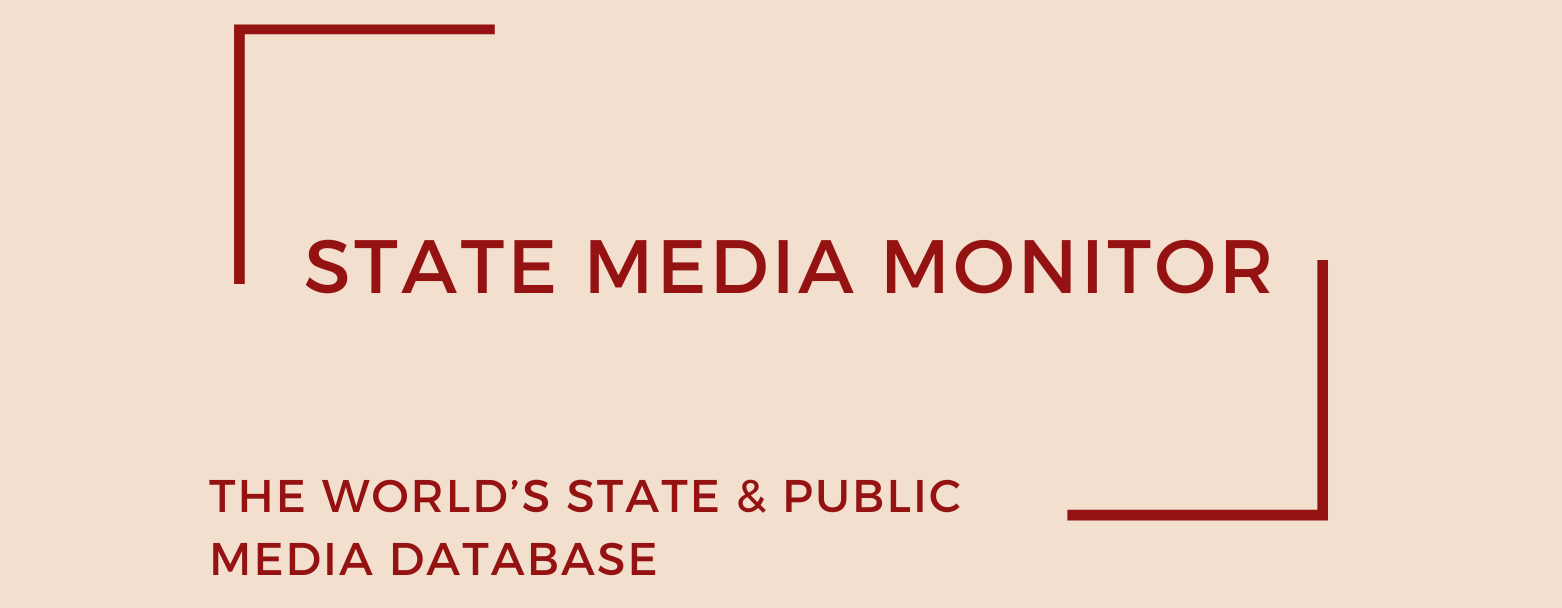Ukrinform
The National News Agency of Ukraine (Ukrinform) is the country’s official state-run news agency. It was founded in 1918 under the name Bureau of Ukrainian Press (BUP), making it both the oldest and the largest state information provider in Ukraine.
Beyond its wire service, Ukrinform also operated a television channel, UA TV, which was launched to provide an international perspective and strengthen Ukraine’s media presence abroad. In March 2020, UA TV was rebranded as Dom (“Home”), with its editorial mission redirected towards audiences in the Russian-occupied territories of Donbas and Crimea, broadcasting content tailored to counter Moscow’s narratives.
Media assets
News agency: Ukrinform
Television: Dom
State Media Matrix Typology
Ownership and governance
Ukrinform’s institutional framework is set out in Government Decree No. 749 of 1997, amended by Government Decree No. 631 of 2008. Under this legal regime, the agency was designated as a state-owned enterprise and the legal successor to the Ukrainian National News Agency, which has since been liquidated.
The General Director of Ukrinform is appointed by the government, while the agency’s internal management is handled by a board of directors whose members are chosen by the General Director. A supervisory board, whose composition must be approved by the government, provides an additional layer of oversight.
Oleksandr Kharchenko has served as General Director of Ukrinform since 2022, steering the state news agency through the most turbulent period in Ukraine’s modern history. A seasoned media manager and policy adviser, Kharchenko previously worked in Ukraine’s information sector and has held advisory positions on media and energy policy. Under his leadership, Ukrinform has become not only the government’s principal newswire but also a strategic instrument in Ukraine’s information diplomacy. Kharchenko is widely regarded in Kyiv as a pragmatic operator with strong links to both government institutions and the broader media community, though critics argue that his closeness to the state blurs the line between journalism and official communication.
Source of funding and budget
The agency’s financing relies on a hybrid model: state subsidies form the backbone of its budget, complemented by commercial revenue, chiefly from content sales and distribution. In practice, state support overwhelmingly dominates: by most estimates, more than 80% of Ukrinform’s income is publicly funded.
For example, in 2020 the agency received a direct state subsidy of UAH 257 million (around US$10 million). While budget allocations for 2024 and 2025 have not been publicly disclosed in detail, independent Ukrainian media observers noted that Ukrinform’s state funding increased modestly in both years as part of Kyiv’s broader wartime information strategy. At the same time, the agency’s commercial revenue base has remained limited, reflecting the challenges of operating in a media environment destabilised by Russia’s full-scale invasion.
Editorial independence
Ukrinform’s editorial mandate is explicitly tied to state functions. The founding decree obliges it to act as the official distributor of documents from the Verkhovna Rada (Parliament), the President, the Cabinet of Ministers, and other government bodies; report on state policy and public life in Ukraine; provide official information to public authorities; and disseminate government positions on major domestic and international issues.
While the same decree also requires Ukrinform to function independently of political parties and social organizations, the reality is more complex. In practice, the agency cannot be considered fully autonomous from government influence, especially during wartime. Since February 2022, Ukraine’s media environment has been shaped by emergency measures, including elements of censorship and coordinated information policy, designed to protect national security and maintain a unified information front.
There is no dedicated statute establishing Ukrinform’s editorial independence, nor any independent oversight mechanism to guarantee it. The absence of such institutional safeguards leaves the agency exposed to political pressure, even though it remains a central pillar of Ukraine’s official communication infrastructure.
August 2025
Citation (cite the article/profile as part of):
Dragomir, M. (2025). State Media Monitor Global Dataset 2025.
Media and Journalism Research Center (MJRC).
Zenodo.
https://doi.org/10.5281/zenodo.17219015
This article/profile is part of the State Media Monitor Global Dataset 2025, a continuously updated dataset published by the Media and Journalism Research Center (MJRC).
